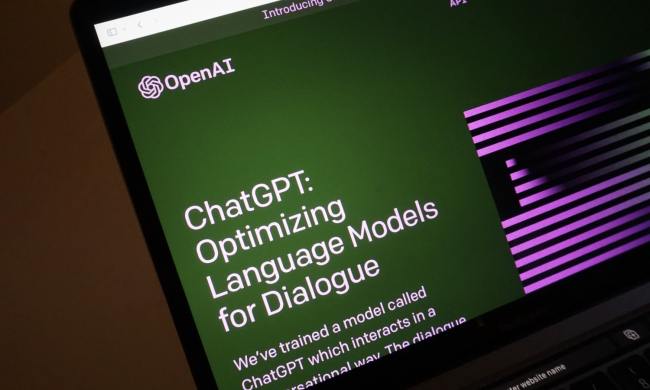In the world of AI, you’ve no doubt heard about what OpenAI and Google have been up to. And now, Meta’s Llama LLM (large language model) is becoming an increasingly important player in the game, especially with its open-source nature. Meta recently made a big splash with the launch of its Llama 3 AI model, and it’s shaken up the field dramatically.
The reasons why are multiple and varied. It’s free to use, it has a wide user base, and yes, it’s open source, to name but a few. Here’s why Llama 3 is taking the AI industry by storm and may shape its future for some time to come.
Llama 3 is really good
We can debate until the cows come home about how useful AIs like ChatGPT and Llama 3 are in the real world — they’re not bad at teaching you board game rules — but the few benchmarks we have for how capable these AI are give Llama 3 a distinct advantage.
Some of the Llama 3 developers have been sharing tests comparing the latest models against some of the leading alternatives and, in many cases, Llama 3 comes out on top. These benchmarks cover mathematics, natural language processing, coding abilities, and general knowledge and understanding.
It’s here! Meet Llama 3, our latest generation of models that is setting a new standard for state-of-the art performance and efficiency for openly available LLMs.
Key highlights
• 8B and 70B parameter openly available pre-trained and fine-tuned models.
• Trained on more… pic.twitter.com/iaOBYaOli5— Ahmad Al-Dahle (@Ahmad_Al_Dahle) April 18, 2024
Don’t take their word for it, though. You can test Llama 3 against itself and a range of other AI models in the AI Arena.
A massive existing user base
When OpenAI launched ChatGPT, it had some early interested parties, but it had to grow its audience organically. It did so incredibly quickly, registering tens of millions of users following the success of its GPT 3 and GPT 4 models. But Meta’s Llama 3 is already embedded in its Meta AI, which can be used across Facebook, Instagram, WhatsApp, and Messenger, as well as on the web app versions of all these services.
That’s not millions of existing users. That’s billions. All Meta has to do to get more data fon how Llama 3 is used, or how to improve it for everyday users, is to nudge these billions of users to try it out. That’s a captive audience that few other tech companies can even come close to competing with.
It’s entirely free
If Meta CEO Mark Zuckerburg’s failed Horizons VR initiative showed us anything, it’s that Meta has no problem dumping tens of billions of dollars into projects that don’t really go anywhere. But that lack of necessary monetization is an incredible strength of a company investing in such a cutting-edge field, because where other AI developers may need to get a return on their investment relatively quickly, Meta really doesn’t need to.
With its gigantic data center infrastructure and firm foundational revenue stream from its various services, Meta is able to price Llama 3 at precisely $0 for everyone. It can afford to burn through billions of dollars worth of computing power in the quest to further develop Llama 3 and future LLMs. That makes Llama 3 more readily accessible to its billions of users than any other top-tier AI out there.
It’s open source
Where price matters for users, code transparency matters for developers. Unlike the proprietary platform AIs, like ChatGPT and its various language models, Llama 3 is open source. That means that developers can look at how it runs and make changes to it. They can iterate on top of it and take the project in their own intriguing directions. That encourages further adoption, since more developers will be able to integrate the Llama 3 model into their own projects, and it encourages better code, since more people can impact its development.
That has the potential to make Llama 3 somewhat of a standard, entrenching it for the forseeable future.
It can run locally
One of the biggest drawbacks of large language model AIs like Google’s Gemini, ChatGPT, or previous iterations of Meta’s Llama is that they take an inordinate amount of computing power — not only in training, but in actual operation. That’s why you have to pay for the privilege of using some more demanding AIs, and why the response is sometimes slow when the service is busy.
But Llama 3 can run locally on consumer laptop hardware. It requires a little jumping through hoops, and you’ll need a lot of memory to make it work effectively (the laptop used in the below example is the MacBook Pro M1 Max with 64GB of RAM memory), but that’s not much of a barrier for entry.
Run Llama 3 Locally with Open-WebUI
This video is NOT sped up. The model downloaded from @ollama (llama3:instruct), running with @OpenWebUI, on a Macbook Pro M1 Max 64G.
You can run it right now on your own machine (Windows, Linux, Mac) with 1 click. https://t.co/sDpI4TEiwa pic.twitter.com/qe5PIv3hQm
— cocktail peanut (@cocktailpeanut) April 18, 2024
This is not the final version of Llama 3, however. It uses 70 billion parameters in its responses, but there are internal versions of Llama that utilize up to 400 billion parameters. Llama 3 is also far from the first LLM to be run locally, but it is the most capable yet, and suggests that we could see this sort of AI run in smartphones, smartglasses, VR headsets, and other devices in the near future.
And it’s only the beginning
Llama 3 is amazing, but there’s a lot it can’t do just yet. It is currently entirely text-based, which means it isn’t the multimodal AI that we’ve seen with ChatGPT and similar services. It can’t process video, or audio, or images. It can’t respond to vocal commands or speak back to you. It currently only works with the English language, too.
But it will soon be able to do all those things — and likely more. Llama 3 is a warning shot across the bow of many AI developers singaling that the time of smaller startups stealing the limelight in AI development may be over. Without the kind of major financial, technological, and infrastructure backing of a company like Meta, competing directly could be very difficult indeed.



